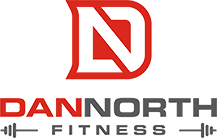Lower back pain is by far one of the most common issues experienced by the masses. Whether it’s a result of poor postural habits or improper training methods, back pain sucks. But that doesn’t mean it’s the end of your training.
Sure, you can use it as an excuse to get fat on the couch. OR you can use it as an opportunity to learn and train smarter.
Since you’re reading this, I’ll assume you chose the latter.
General Guidelines When Training with Lower Back Pain
- Refer out. The longer you ignore pain, the longer you’ll hurt. Get a second opinion from a professional. Because at the end of the day, you’re (probably) not a doctor or a therapist.
- If it hurts, stop. Pain is your body telling you something’s off. Your body is smarter than you. Learn how to listen to it. If an exercise hurts, replace it with something that doesn’t.
- Train around it. There’s always something you can do. Focus on what you can do instead of what you can’t.
- The best posture is one that’s constantly varying. Your spine likes movement. It’s not designed to be hunched over your desk all day. Get up and move more.
- Always warm up. This is non-negotiable. Think of some of your favourite athletes. All of them warm up. Every single workout. There’s no reason you shouldn’t do the same.
- Try prone and supine exercises. More surface area covered means more stability. More stability means less stress on your back. Prone and supine positions are great for this.
- Hang out and decompress. Your spine is in a constant state of compression. Hang from a bar for a few sets of 30-60 sec for some much needed decompression. If you’re really crazy, hang upside down with inversion boots.
- Do more hip mobility. Restricted hips can cause excessive anterior pelvic tilt and unwanted stress in your lower back. Move your hips more.
- Roll out your glutes. Doing SMR (self myofascial release) work on your glutes will likely reduce your lower back pain (a lot).
Things to Avoid When Training with Lower Back Pain
1. Heavy Back-Loaded Squats
This pretty much goes without saying.
Loading weight behind your neck compresses your spine. What’s more, the change in direction between the down and up portion of the squat (eccentric/concentric phases) during back-loaded squats can put a lot of sheer force on your lower back.
All in all, if you have lower back pain, steer away from back-loaded squats (at least for now).
2. Heavy Hinge Patterns
Barbell deadlifts, good mornings, heavy rack pulls…all of these movements can exacerbate your lower back issues when loaded heavily and performed poorly.
3. Bent Over Rows
Bent over rows call for a static position in the lower back (you’re hinged over while rowing). If you have lower back pain, this isn’t a great idea (at least for now).
You’re probably better off doing rows that don’t require you to hinge and load your lower back (keep reading to see some examples).
4. High-Impact Plyometrics and Running
Running and plyometrics can put a toll on your joints/ligaments, whether or not you have existing lower back pain.
When you run, you’re landing with roughly 8-12 times your bodyweight on one leg. That’s a lot of force. Couple that with the fact that your back hurts and it’s only going to make things worse.
If you have lower back pain, it’s usually encouraged to take a break from high-impact activities like running, jumping, and plyometrics.
5. Leg press machine
I would be remiss to write a blog on training with low back pain and not include a blurb on the leg press.
Chiros and physiotherapists would need to look for new revenue streams if this piece of equipment disappeared. Context matters, and there’s a time and a place for a lot of stuff. But there’s no time or place to do the leg press when you have lower back pain.
If you’re doing the leg press to build bigger, stronger legs…there are plenty of other “back-friendly” alternatives.
Back-Friendly Exercises
1. Single Leg Work
The conventional approach to leg training consists primarily of bilateral movement patterns (ex. squats and deadlifts). The issue is that these exercises tend to put your lower back in vulnerable positions.
Single leg exercises allow you to bypass the spine and place the load directly to your lower body.
2. Squat Variations
While heavy back-loaded squats probably aren’t a great idea, there are other squat variations you can use…sans the lower back ramifications.
3. Row Variations
As mentioned earlier, the best row variations if you have lower back pain are ones that don’t require you to hinge forward and load your lower back.
Chest-Supported Rows
Prone rows or chest-supported rows offer stability in the lower back and don’t demand it.
Seated Rows
Inverted Row
4. Floor Press
Have you ever felt your lower back during the bench press? That’s because it’s usually recommended to arch your back when benching. It reduces the range of motion the bar has to travel, creates scapular stability, and increases transfer of force. But if you have lower back pain, this arched position should be avoided (at least for now).
Floor press variations reduce the arch in your back and the range of motion of the press. This is a great way to retain the benefit of the bench press, without the unwanted stress on your lower back.
5. Dead Bugs
Your core’s main responsibility is to stabilize your spine while your arms and legs are in motion. The dead bug is one of the best exercises to train your core to do exactly what it’s meant to do. What’s more, it calls for a flat “neutral” position in the lower back with no flexion or unwanted force on your spine.
Summary
Back pain sucks, but it isn’t an excuse to do nothing. Find what works for you and train around it.





